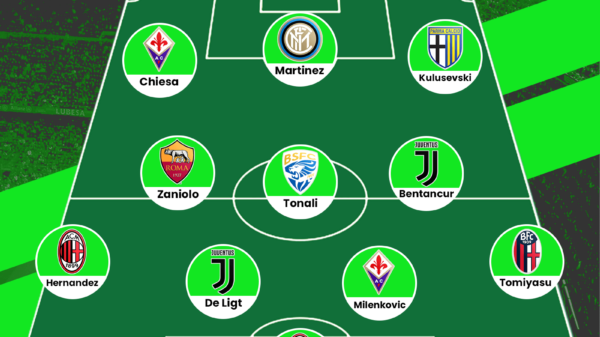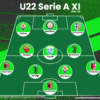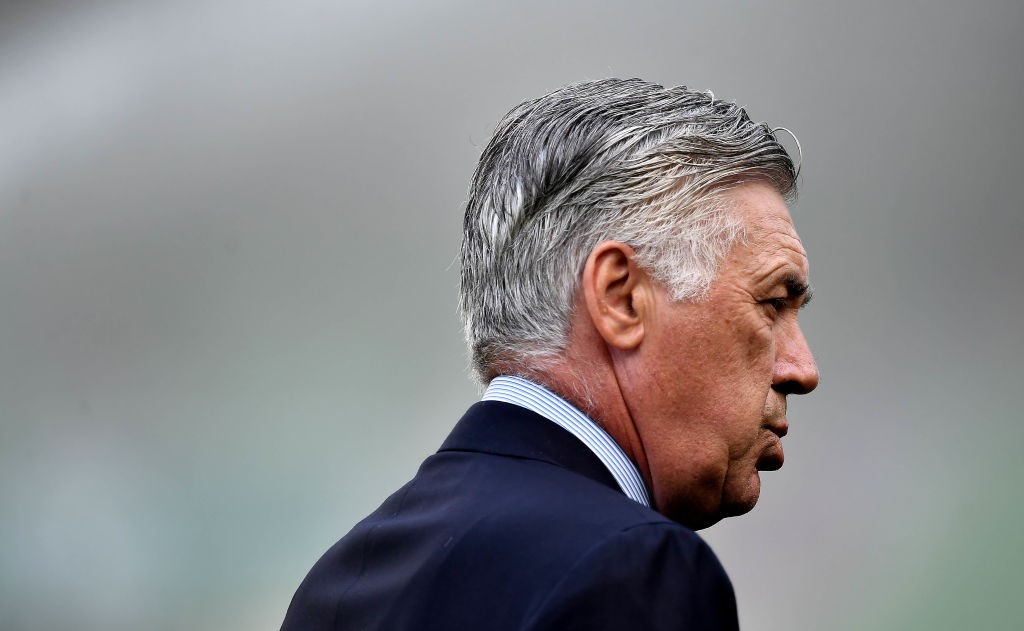Abhijith Bharali provides a tactical analysis of the Derby d’Italia that finished Inter 2-1 Juventus.
A Mauro Icardi-inspired Inter handed champions Juventus their first defeat of the season at San Siro. While all eyes were on big money signing Gonzalo Higuain on the Juve bench, another Argentine striker stole the show as Inter made the Bianconeri pay for their lacklustre midfield play.
Line Ups
Internazionale: Samir Handanovic, Danilo D’Ambrosio, Davide Santon, Jeison Murillo, Miranda, Gary Medel, Ever Banega, Joao Mario, Antonio Candreva, Eder, Mauro Icardi (c).
Juventus: Gianluigi Buffon (c), Giorgio Chiellini, Leonardo Bonucci, Medhi Benatia, Stephan Lichtsteiner, Alex Sandro, Kwadwo Asamoah, Miralem Pjanic, Sami Khedira, Paulo Dybala, Mario Mandzukic.
Basic setups
Home team Inter came into the game on the back of a Europa League humiliation at the hands of Israeli side Hapoel Be’er Sheva, and made six changes to the side that lost 2-0 mid-week. The Nerazzurri lined up in a 4-3-3 shape with a narrow 1-2 midfield of Medel, Banega and Joao Mario. Candreva and Eder played on the shoulders of and behind Juve’s two wing-backs, with Icardi playing as the outlet up top.
Max Allegri’s Juve failed to break a defensive Sevilla in the Champions League last week and made five changes from their mid-week fixture. Higuain was out, replaced by Mandzukic while there was a new set of wing-backs in Alex Sandro and Lichtsteiner. Pjanic was to play as a deep-lying playmaker in Mario Lemina’s absence, but the Bosnian was disappointing throughout.
Inter’s high pressing
Inter pressed high in the initial stages of the game in a 4-2-4 shape with their three front men—Icardi, Candreva and Eder—converging on the three Juve centre-backs in the away side’s build-up phases. That forced Buffon to take long goal kicks instead of his favoured short ones as Juve failed to impose themselves on the game from the start.
Frank de Boer set up his team to break Juve’s play in the first and second phases of attack considering the higher quality and better tactical nous of the away side. Inter’s initial approach was to suffocate Juve in the centre through pressing—the higher midfielders in their 1-2 midfield pushed up—and not allow any passing access to the midfield.
This resulted in Juve’s below par ball circulation from the middle third to the final third through central areas. Also the fact Juve were content to sit back and wait for holes opening up in Inter’s midfield didn’t help as their pressing was non-existent and Inter were barely forced into mistakes.
It was only after the half hour mark that Inter lessened their pressing intensity from the front and set up a midfield block. Inter’s mid-block allowed the Juve centre-backs and Pjanic time on the ball but their midfield passing lanes were blocked by then and there was little the away side could do to pick Dybala in central areas. That forced Juve to pass out to the wing-backs wide, which was where another aspect of Inter’s off-the-ball play was seen.
Inter’s superior midfield structure
Pjanic struggled in his deep-lying role against Inter’s press in the first half. One of Joao Mario or Banega would push up to press Pjanic in Juve’s build-up phases. Inter created triangles out wide for ball progression and keeping possession which Juve lacked. When Juve’s wing-backs moved the ball into the Inter half, only Khedira or Asamoah were their options for a central dump, and Dybala on occasions when Khedira made deep runs.
Since Juve moved the ball in straight lines and depended on the individual quality of their full-backs to make inroads from wide areas, Inter were easily able to break those moves with their ball side central midfielder helping the full-back on his side to recover possession. Had Juve created triangulations, it would’ve been easier for them to break the Inter pressure on the flanks.
Juve’s play was disrupted, but that didn’t automatically mean Inter created chances as a result. It is no secret Juve are one of the best at not conceding chances to opponents and against Inter as well, their positional recovery was exemplary. Juve didn’t offer much in an attacking sense, but didn’t allow Inter to create either with their three-man midfield block almost always in place whenever Inter had the ball in midfield. That was Juve’s alternative to Inter’s pressing approach off the ball.
While Juve’s midfield three were fairly static and made predictable movements, Inter’s were more dynamic and Joao Mario and Banega even interchanged positions and were often seen popping up on either flank. Even Medel would sometimes move up to press and Banega dropped into his vacated area, thus maintaining the balance in the middle. But Inter made poor decisions on the ball in the final third which explains the general lack of good chances created. Their full-backs were also not involved in deeper areas, something that could’ve been explored given Icardi’s aerial prowess.
Similar patterns in the second half
Juve were keener to pin Inter back in the second half with Lichtsteiner initiating the front press. But with the likes of Mandzukic and Dybala—who as forwards aren’t that good at collective pressing—not supporting the early press, Juve gradually dropped into their block midfield shape. This again allowed Inter to progress the ball comfortably from the back.
Similar to the opening half, Inter barely stretched Juve’s back line, but they put more crosses into the box in the second half to create chances after a fairly limp first half where Juve created the better chances despite the Nerazzurri having a territorial dominance.
Inter’s 4-2-4/4-5-1 pressing and block structures were on, and Juve weren’t allowed to build into the second phase, let alone connect the second phase to the third phase. Asamoah and Pjanic’s quality on ball carries were limited, and once they progressed into advanced areas, Inter made sure they had limited passing options.
That meant Juve needed the likes of Bonucci and Barzagli to create from the back. But Inter’s compact central structure forced the centre-backs to ping long balls which were gambles that didn’t pay off. Also Juve’s lack of passing options on the ball meant they failed to create meaningfully.
The Juve goal came about from a piece of 1-v-1 brilliance from Alex Sandro on the left flank and his ball across the goal was met by Lichtsteiner who ghosted into the box from behind Santon. That was the first time in the game both Juve’s wing-backs were inside Inter’s 18-yard box.
Icardi brilliance
Heading into the game, Icardi had scored all of Inter’s 2016/17 goals and he also boasted a mean streak against Juve. And he didn’t disappoint the Inter fans who have had to endure quite a lot in the last few days. Icardi’s headed equaliser brought Inter back into the game and it was his tenacity and sublime technique that helped create Ivan Perisic’s winner.
Icardi led Inter’s collective front press, made himself a channel outlet in counter attacking situations, interchanged with Eder and switched flanks and fought every 50-50 ball in the air. In a game lacking in creativity, Icardi was the standout performer for Inter with a game-highest eight involvements in goalscoring chances. It was he who inspired the comeback and fully deserved to be the man of the match.
Conclusion
Juve were pedestrian for long stretches of the game failing to match Inter’s energy and intensity. They weren’t helped by Pjanic’s deep role and Asamoah’s lack of conviction on the ball. Perhaps Marchisio’s return could see Pjanic play in his more favoured role higher up the pitch. Juve’s switch to a 4-3-3 late in the game failed to open Inter up despite Higuain and Marko Pjaca’s introduction which shows how solid the home side were defensively.
Inter didn’t create much but their win was probably deserved considering the work they put in on the night. Banega was all over the midfield playing a variety of roles ranging from a number 6 to a number 10. The win buys more time for De Boer after his poor start at Inter, and similar performances with more creativity up front would make Inter a good bet to challenge for the Champions League places.
Read all our other Tactical Analyses here
- Analysing Belgium’s tactical approach at the 2018 World Cup - June 17, 2018
- Tactical Analysis : Sevilla 0-0 Villarreal: Villarreal’s off-the-ball discipline denies Sevilla - February 8, 2017
- Indian Super League: Indian Team of the Tournament (League Phase) - December 12, 2016































































